The Age of Revolutions | History - Revolution in Latin America | 12th History : Chapter 11 : The Age of Revolutions
Chapter: 12th History : Chapter 11 : The Age of Revolutions
Revolution in Latin America
Revolution in Latin America
The regions of Latin America were conquered by the
Spanish in the sixteenth century. The Portuguese and the French also had their
presence there. The political power of the South American cultures such as the
Incas and the Aztecs was destroyed by these colonial powers. The colonizers (conquistadores) brought to an end the
local religious beliefs and introduced Catholic religion. The colonial rule in
Latin America was brutal and was marked by widespread genocide and decimation
of the indigenous population. The native people were made to work as slave
labourers in the farm lands as well as the mines of the colonial masters who
exported goods such as sugar, coffee, gold and silver to European nations.
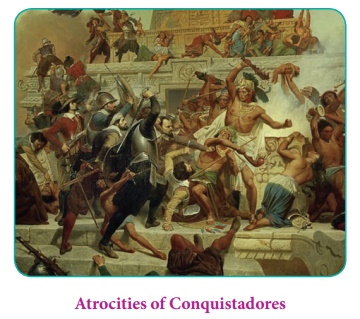
Latin America today consists of many nations such
as Mexico, Brazil, Argentina, Peru, Chile, Venezuela, and Caribbean countries
in Central and South America.
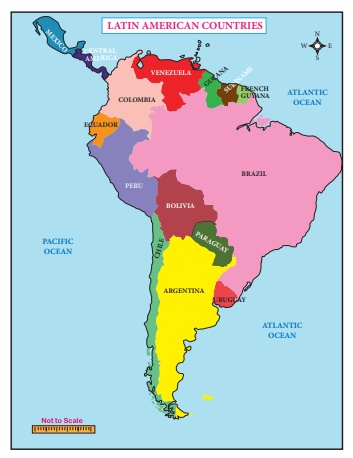
The Haitian Revolution
Haiti, earlier known as Saint-Domingue (as the
French called their colony) was the richest French colony (1659–1804) in the
Caribbean Sea. Its plantations produced more sugar than all of Europe’s other
Caribbean and American colonies put together. The island’s indigenous
population, forced to mine for gold, was devastated by European diseases and
brutal working conditions, and by the end of the sixteenth century it had
virtually vanished. Landowners in western Hispaniola imported increasing
numbers of African slaves. By 1789, the estimated 556,000 population of
Saint-Domingue included 500,000 African slaves, 32,000 European colonists
(whites), and 24,000 free affranchis or
mulattoes (black-people of mixed African and European descent).
News of the storming of the Bastille was followed
by armed defiance of the royal governor. Vincent Ogé, a mulatto, who had
lobbied with the Parisian assembly for colonial reforms, led an uprising in
late 1790 but was captured and executed. In May 1791 the French revolutionary
government granted citizenship to the wealthier mulattoes who had even owned
slaves. But Haiti’s European population disregarded the law. Within two months
isolated fighting broke out between European whites and mulattoes. All of them
expected the black slaves to continue working, suffering and dying as if
nothing had changed. But they took them by surprise when in August thousands of
slaves rose in rebellion.

The European whites attempted to appease the
mulattoes to quell the slave revolt. The French National Assembly granted
citizenship to all mulattoes in April 1792. The country was torn by rival
factions, some of which were playing into the hands of Spanish colonists in
Santo Domingo or of British troops from Jamaica. In 1793, a commissioner,
Léger-Félicité Sonthonax, was sent from France to maintain order. He offered
freedom to slaves who joined his army. He soon abolished slavery altogether, a
decision ratified subsequently by the French government.
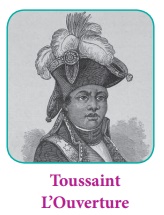
In the late 1790s, Toussaint L’Ouverture, a
military leader and former slave, gained control of several areas. Napoleon
sent a fleet of 12,000 troops to seize control of Saint-Domingue from Toussaint
L’Ouverture’s forces. The war which followed was prolonged and bloody. At one
point the French army seemed to have won after Toussaint was misled into
believing in the possibility of conciliating with the enemy. But he was kidnapped
and killed. His former lieutenant Dessalines rose to the occasion and organised
black resistance. He defeated Napoleon’s army. Saint Domingue became the
independent black state of Haiti in 1804.
Venezuela and New Granada (now Columbia)
Inspired by the Haitian revolution, slaves in
Venezuela rose in rebellion in the 1790s. Creoles (persons of mixed European
and black descent) wanted an expansion of the free trade that was benefiting
their plantation economy. At the same time, however, they feared that the
removal of Spanish control might bring about a revolution that would destroy
their own power. Therefore, they formed the strong loyalist faction in the
Viceroyalty of New Granada.
In 1808 Napoleon had made his brother Joseph the
king of Spain after the abdication of the weak king Charles IV in favour of his
son Ferdinand. Napoleon had them both imprisoned. With Charles and Ferdinand
removed from the scene, the Empire was without a stable government for six
years. The political crisis in Spain provided the opportunity for the assertion
of its colonies. Soon the rebels as patriots organised revolutionary
governments that introduced some social and economic reforms in 1810.
In Venezuela
the patriots led by Simon Bolivar openly declared a break with Spain the following
year. The earthquake that wreaked particular destruction in patriot-held areas
in 1812 provided the pretext for loyalist forces to crush the patriots’ army,
and drive Bolivar and others to seek refuge in New Granada (the heart of the
viceroyalty).
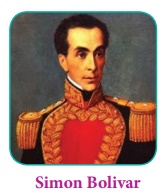
Bolívar soon returned to Venezuela with a new army
in 1813 and waged a campaign with the army’s motto, “Guerra a muerte” (“War to
the death”). The army led by loyalist Jose Tomas Boves again succeeded in
driving Bolívar out of his home country. By 1815 independence movements in
Venezuela and almost all across Spanish South America seemed dead. A large
military expedition sent by Ferdinand VII in that year re-conquered Venezuela
and most of New Granada. Yet another invasion led by Bolívar in 1816 failed.
The following year (1817) a larger and revitalised
independence movement emerged, winning the struggle in the north and taking it
into the Andean highlands. Bolivar emerged as a strong military and political
force after the struggles. At this point a group of llaneros (cow boys) of mixed ethnicity led by Jose Antonia Paez
joined the struggle and contributed decisively to the patriots’ military
victories in 1818–19. After leading his army up the face of the eastern Andes,
Bolívar dealt a crushing defeat to his enemies in the Battle of Boyaca.
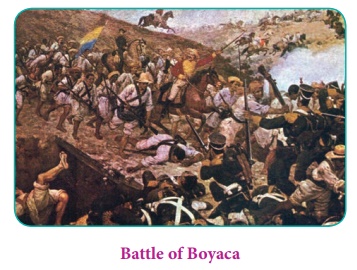
Consolidating victory in the north proved
difficult. A congress that Bolívar convened in Angostura in 1819 named Bolivar
as president of Gran Colombia, a union of what are today Venezuela, Colombia,
Panama, and Ecuador. But the sharp divisions prevailing in the region
ultimately dashed Bolívar’s hopes of uniting the former Spanish colonies into a
single new nation as United States of Latin America. Furthermore, loyalist
supporters still held much of Venezuela, parts of the Colombian Andes, and all
of Ecuador. Conditions became favourable in 1820 troops waiting in Cádiz to be
sent as part of the crown’s military campaigns revolted. Eventually New Granada
and Venezuela were liberated in 1821. A congress held that year in Cúcuta, a
Columbian city, chose Bolívar president of a now much more centralised Gran
Colombia.
Simon Bolivar: Bolivar belonged to
an old aristocratic Creole family in
Caracas. He was of fundamental importance to the movement as an ideologue and
military leader. In his most famous “Jamaica Letter” (written during one of his
periods of exile, 1815), Bolívar affirmed his undying faith in the cause of
independence, even in the face of the patriots’ repeated defeats. While
critiquing Spanish colonialism, Bolívar held the view that the only path for
the former colonies was the establishment of an autonomous and centralised
republican government. The type of republic that he eventually espoused was
very much an oligarchic one. He believed that a virtuous governing system would
not be possible if the nation was divided by ethnicity. Bolivar was an
inspiring figure to left-wing and emancipatory movements in Latin America even
in the latter half of the twentieth century.
Mexican Revolution
The independence of Mexico came late. Mexico had a
powerful segment of Creoles and Peninsulars, who were the colonial masters born
in Spain or Portugal. For many of the powerful in Mexican society, a break with
Spain meant a loss of traditional status and power. Between 1808 and 1810,
Peninsulars had acted aggressively to preserve Spain’s power in the region.
Rejecting the notion of a congress that would address the question of
governance in the absence of the Spanish king, leading Peninsulars in Mexico
City deposed the viceroy and persecuted Creoles. They then welcomed weaker
viceroys whom they knew they could dominate. Peninsulars’ efforts could not,
however, prevent the emergence of an independence struggle.
The revolution in Mexico was led by a catholic
priest, Miguel Hidalgo. He supported the poor people of Mexico and sympathised
with the poor living conditions of Native Americans. His emotional speeches at
the Church of Dolores called for independent Mexico. He led a revolutionary
army consisting of Mestizos against the army of Spain and Creoles. However, he
was defeated and killed in 1811. Later the movement was led by Jose Maria
Morelos, who declared independence from Spain in 1813. He was also defeated in
1815.
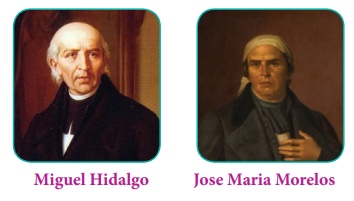
The Creoles or the wealthy merchants were watching
the developments in Spain where a movement to overthrow monarchy and to make a
new constitution was afoot. Thinking that this might reduce the power of the
Creoles, they declared independence in 1821. It is interesting to note that the
person who led the movement was the same officer who defeated the army of Maria
Morelos. He declared himself as the emperor whose ruthless rule was overthrown
finally. In 1824 Mexico declared itself as a republic.
Independence of Brazil
Brazil was a colony of Portugal. When Napoleon
invaded Portugal in 1808, the Portuguese emperor Dam Joao (John VI) fled to
Brazil. He had developed the colony in all aspects by introducing land reforms
and establishing military, medical and art schools. Even after the defeat of
Napoleon, the Portuguese ruler continued to stay in Brazil. But when his power
was challenged he decided to go to Portugal leaving the colony of Brazil in the
hands of his son Dom Pedro.
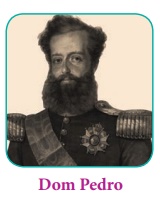
The reliance of the Brazilian upper classes on African
slavery favoured their continued ties with Portugal. Plantation owners depended
on the African slave trade, which Portugal controlled. The size of the slave population
– approximately half the total of Brazilian population in 1800 – also meant
that Creoles shied away from political initiatives that might mean a loss of
control over their social inferiors. Therefore, the Portuguese authorities at
home put an end to the reforms undertaken by Joao in Brazil. They wanted Dom
Pedro to return to Portugal. However, Pedro declared Brazil’s independence and
decided to stay on. In 1822, Brazil obtained independence from Portugal and it
became the only constitutional monarchy in South America with Pedro I becoming
its first emperor.
Other Revolts
The liberator of Argentina, San Martin joined the
Chilean liberator Bernardo O’Higgins and both were able to get independence for
Chile in 1818 followed by Peru in 1820. Bolivar and San Martin met at the port
in Ecuador, Guayaquil, to discuss the future course of actions in Latin America
and for a probable unification. While San Martin wanted European form of
government with constitutional monarchy in the colonies, Bolivar wanted
republican form of government. Though they could not reach any agreement, San
Martin retired and allowed Bolivar to take full command. Bolivar could get
independence for all South American colonies by 1826.
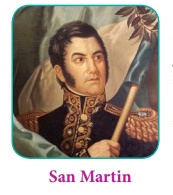
After the independence of all the colonies, Bolivar
tried to unite all Latin American countries under one nation called Gran
Colombia. However, the rugged geographical features with mountains and forests
along with power struggles could not make it a reality. Though most of the
Latin American countries declared themselves as republics and were free from
Spanish rule, they were still dependent to a greater extent on foreign powers.
While Mexico was invaded by the US and France, in the course of the nineteenth
century, Britain continued to exercise its dominating influence over countries
like Argentina and Chile for a long time to come. In each Latin American
country oligarchic cliques ran rival Liberal and Conservative parties and
preserved unequal social structure characterised by extreme privilege to great
landowners and grinding poverty to the underprivileged.
In the twentieth century, especially after World
War II, South America was a troubled continent as USA sought to control it by
pliant dictatorial governments (often referred to as banana republics).
Related Topics